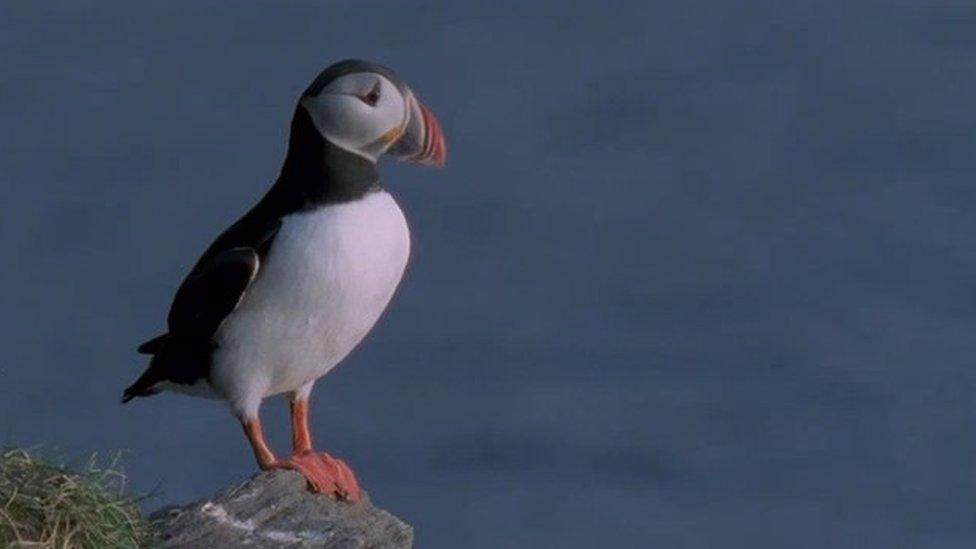Puffins: Rats and ferrets targeted to protect Rathlin Island seabirds
- Published
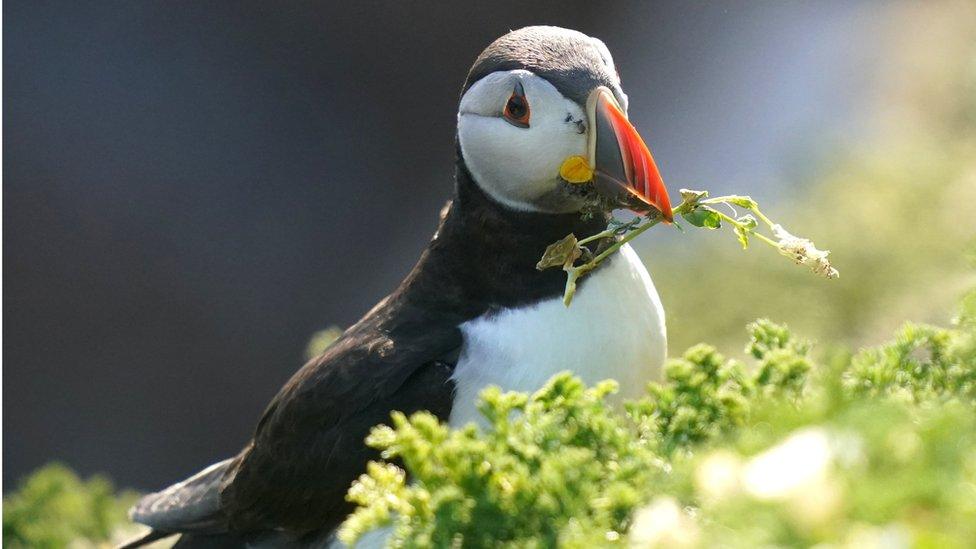
Puffin numbers on Rathlin have gone down in recent years
Think of Rathlin Island and you most likely think of puffins.
But with numbers declining by 40% since 1999, the race is on to protect the colourful ground-nester from predators before the balance tips.
Now, in a world first, a new project will see ferrets and rats trapped to eradicate non-natives from the island.
After a year of preparation, 450 traps with wireless monitoring and 6,000 bait stations are being laid all over the island from this winter.
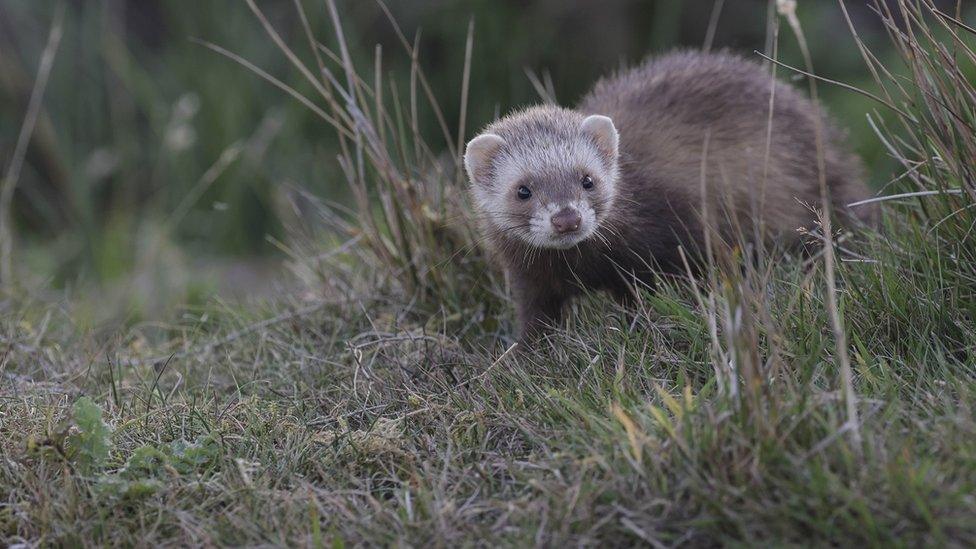
Ferrets are believed to have been introduced to Rathlin Island in the 1980s
The aim is to have all ferrets and rats removed by 2026, restoring the island to a safe haven for internationally significant breeding seabirds.
As well as puffins, there are razorbills, kittiwakes, Manx shearwaters, guillemots and fulmars.
Voracious hunters
Monitoring will continue beyond the five-year £4.5m the LIFE Raft project to maintain biosecurity.
Rats most likely arrived on boats more than a century ago.
But ferrets, voracious and efficient hunters, were released deliberately to control the rabbit population.
Both species quickly turned their attentions to the seabirds and their young.
They are now all over the island and RSPB warden Liam McFaul is worried that matters are at a tipping point.
He said without some control mechanism to control the predators, there could be a day when hardly any puffins will be left on Rathlin.
He has lived his whole life on the island and has monitored seabirds here for more than 30 years with the RSPB.
"I can't imagine the day that there wouldn't be any of these seabirds or a real big shift in numbers of the population.
"Rathlin's such a strategic and important nesting site for the seabirds because it's an off-shore island and in that case should be safe," he said.
A team of people, like conservation scientist James Crymble, has spent the year surveying the island and training in preparation for what is a mammoth undertaking.
"Rathlin is actually quite a big island and it's quite a diverse island as well, there's lots and lots of different habitats, different terrain. The weather's pretty mean and it's going be a huge job," he said.
"The best way to do it is to lay out a grid across the whole island."
That entails laying a trap every 250m, the range an individual ferret will cover.
Everywhere will need to be targeted, said James, including grassy ledges scattered down the cliffs - an undertaking that requires some extreme training.
"There'll be a huge amount, obviously abseiling, rope access skills, off-roading skills, all terrain vehicles, obviously first aid, things like that.
"By the end of it we'll be an elite force."
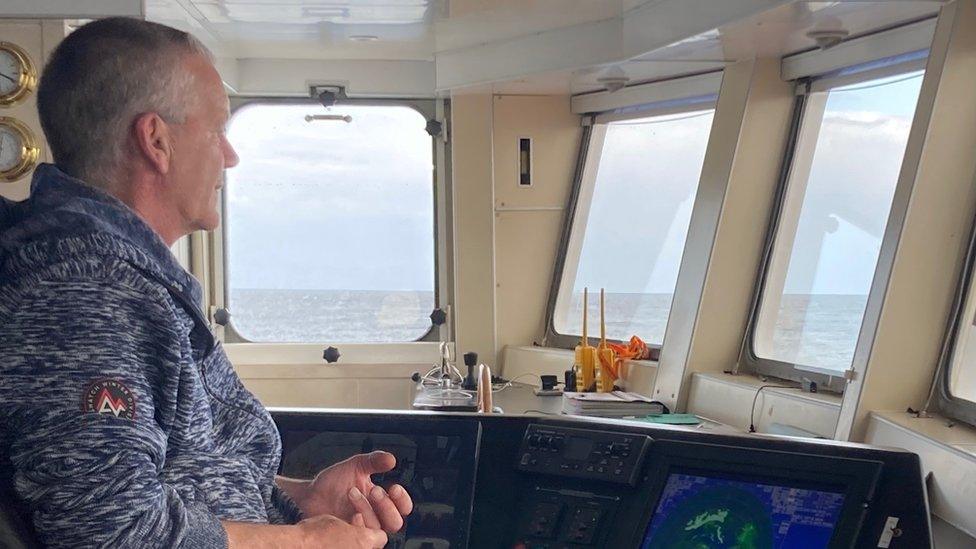
Michael Cecil captains the Rathlin ferry
He added: "And all of that will take place during winter. So absolutely the worst time of year, really, for us walking around."
But winter is the best time to target predators, who will be getting hungry as their prey migrates from the island.
Protecting the seabird population is also about protecting people.
The economy on the island relies on thousands of visitors who come here every year for the wildlife.
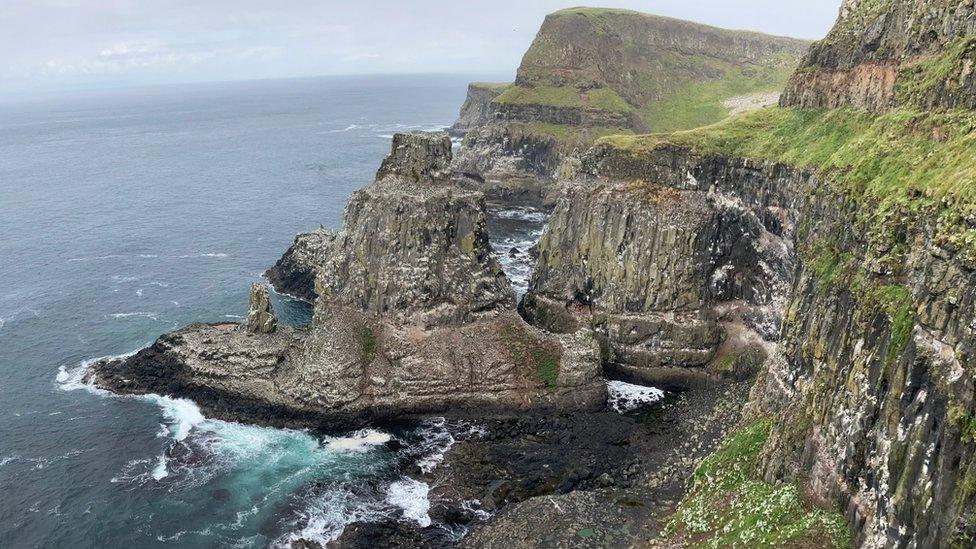
The cliffs on Rathlin Island are thronged with sea birds
So while conservation like this - destroying one species to protect another - can be controversial, people on Rathlin are wholeheartedly behind the project.
"The island resident population have started to catch on to this," said Michael Cecil, chair of the Rathlin Development and Community Association.
"There's more and more interest from around the world, from scientific communities and other islands that are interested in similar things. So yeah, we're starting to pick up a bit of notice, more and more so and islanders are starting to talk about this project."
Similar projects have been undertaken on the Isles of Scilly, in the Shiants off Scotland and, most recently, on Gough Island in the south Atlantic
But this is the first time that ferrets will be targeted as part of a conservation effort like this.
"It's not cheap to get rid of these animals, but it's hugely beneficial for the wildlife here," said James.
"Nature is in crisis. We're looking at climate change. We're looking at overfishing at sea and this is the best way to really protect the island for future generations and just give them a bit of a buffer zone to face these overarching global problems."
It will take time for the populations to recover, but at the upside-down lighthouse that is home to Rathlin's Seabird Centre, Liam McFaul is hopeful.
"Seabirds are a very long-lived species and you're taking out the predators. You're not going to just immediately see next year lots and lots more birds, it'll take a number of years for them to build up.
"Rathlin is an internationally important mixed seabird colony. There's 150,000 guillemots and 22,000 razorbills, that's just literally breeding birds sitting on the cliffs.
"When you look on the sea, that's just peppered with birds and you look in the air, they're flying all over the place.
"So a census of these birds only takes consideration of what's sitting on eggs and on the cliffs. There's thousands and thousands more that's not counted.
"So lots and lots of monitoring will be done over the next few years, to see the changes from the predators being taken out."
Related topics
- Published7 January 2023

- Published10 September 2021
